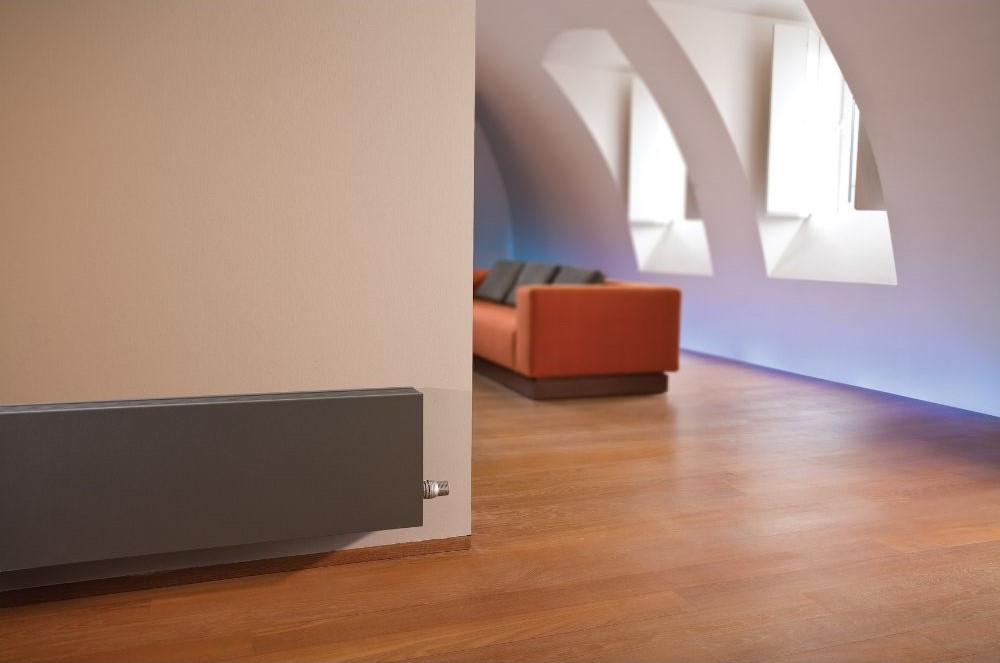LOW CARBON HEATING: WHAT ABOUT EMITTERS?

July 2021
Direct greenhouse gas (GHG) emissions from buildings account for 17% of UK GHG emissions, a figure of 87 Mt CO2e in 2019. These are mainly the result of burning fossil fuels for heating [1]. Of this figure, homes account for 77%, commercial buildings 14% and public buildings 9% [2].
We’re at a pivotal time in our efforts to reduce these emissions and tackle the climate crisis, particularly in the UK as we host COP26 – the global United Nations climate change summit in Glasgow this November – and work to meet our target of net zero by 2050.
At the time of writing, we’re still awaiting the government’s much-anticipated Heat and Buildings Strategy which will set out a number of decarbonisation plans to help us reach net zero. But we know that replacing oil and gas heating systems like boilers with renewable, low carbon technologies will help get us some way towards it. And this is listed by the Climate Change Committee (CCC) as one of three options for reducing building emissions, along with behavioural change, which can drive down or alter patterns in energy consumption, and energy efficiency measures [3].
LOW CARBON HEATING SYSTEMS
Of the approximately 29 million homes in the UK, less than 5% of the heat used is from low-carbon sources. 23 million homes are connected to the gas grid and 4 million use oil or LPG as their main heating fuel or electric heating. In the next 10 to 15 years, the majority of these systems will need to be replaced with low-carbon alternatives if the UK is to meet its net zero target [4].
But when it comes to low carbon heating, there is no one size that fits all. Different solutions suit different buildings. So, it’s important that when deciding which system to use, a heat loss assessment is conducted by a professional to help understand what insulation improvements can be made first, what heat load is required for the space and therefore which systems would be most suitable.
In this useful guide [5], the Energy Saving Trust outlines the main low carbon heating options. They include:
- Ground and air source heat pumps – for space and water heating all year round.
- Solar thermal – solar panels usually used for water heating, often require a boiler or immersion to increase water temperature or during winter.
- Biomass – burning wood pellets to power central heating and hot water boilers (sustainable providing trees are replaced and wood locally sourced).
- Combined technologies – hybrid technologies that use more than one system, for example, Photovoltaic Thermal (PVT) which combines solar electric panels and solar thermal collectors in the same unit.
WHAT ABOUT EMITTERS?
There’s been a lot of talk about heating systems themselves in the shift to low carbon, but not a lot about the emitters that provide the heat output to actually heat our buildings.
The main options that can work with low carbon systems are:
- Underfloor heating
- Radiators/convectors or trench heating
- Others such as fan coils and thermal skirts
The heat load requirements, design preferences or conditions, control requirements and whether the space needs heating only, or heating and cooling will all impact which emitter type is most suitable. As underfloor and radiators/convectors are the most common choices, we’ll explore those further.
UNDERFLOOR HEATING
Low carbon and renewable systems work on lower flow temperatures than fossil fuel boilers, often as low as 35˚C, and underfloor heating works well with these lower temperatures. It can enable a great aesthetic with clear walls and floor. But with a high thermal mass, underfloor heating can be slow to respond, uses a lot of water in comparison to some radiators, and can be a difficult retrofit option. Also, in the UK, underfloor is generally a heating only option so can’t be used if you’re needing cooling too.
RADIATORS/CONVECTORS OR TRENCH HEATING
Do steel panel radiators work with low carbon heating?
It’s a well-known fact that when switching to a lower flow temperature system, standard-sized traditional steel panel radiators will no longer be able to provide enough output to comfortably heat the space. They are designed to work with typical flow and return temperatures of 75/65 or Δt50 (Delta 50) – the UK standard for domestic gas boilers, and most major UK radiator manufacturers only publish outputs at Δt50.
Traditional steel panel radiators need to be greatly oversized to provide the required output for the space. In some cases, they need to be double the size of the originals and additional units may also need to be installed. This can not only ruin the aesthetic of the space, if there is even enough wall space to physically fit the larger radiators in the first place, but also means increased material usage and weight, increased water usage, and slower reaction speeds.
Why Low-H2O is the preferred choice
The alternative option is Low-H2O. Jaga’s Low-H2O products are proven to work at low flow temperatures – you’ll always see our product outputs published at 55/45 too. Low-H2O products can usually heat the space with the same size emitter as the original steel panel rad, or often even smaller, are much more energy-efficient, use less water and less material.
How? They contain fast conducting aluminium and copper heat exchangers which hold 90% less water than a similar output steel panel equivalent. This means that they heat up and cool down much quicker, responding rapidly to change in temperature demand with less energy consumption and no wasteful over-heating.
The ability to achieve high outputs with low water flow temperatures makes Low-H2O the perfect partner for heat pumps and other low carbon systems. Testing by multiple independent bodies, including BRE and KIWA, has shown that Low-H2O radiators consume between 9 and 16%* less energy than a system with steel panel radiators. This reduced energy consumption, combined with cleaner production techniques, and the fact they are fully recyclable at the end of their life, make Low-H2O radiators a much more environmentally friendly option for low carbon heating.
For a full energy and material comparison based on low flow temperatures, see our useful comparison guide here: jaga.co.uk/about/innovation-technology/low-h20.

Smaller radiators and greater outputs
For even higher outputs and faster response times with low carbon heating systems, Dynamic Boost Hybrid (DBH) can be added inside the Low-H2O radiator.
DBH is a pioneering technology utilising small, quiet electric thermal activators to increase airflow and significantly boost radiator output without increasing radiator size. In fact, it means the radiators can be even smaller. So, if wall space and aesthetics are paramount, this is a great option.
Providing the heating system can supply cooling water, DBH can also be switched to light cooling mode. This method of non-condensing cooling is much more environmentally friendly than air conditioning, using less energy and no F-gas, so it’s a perfect solution for a comfortable indoor climate all year round.
WHAT NEXT
To help encourage the switch to low carbon heating, organisations such as the Heat Pump Association are recommending that a maximum flow temperature of 55˚C is mandated in Building Regulations for replacement heating systems from 2026, and perhaps this will be included in the upcoming Heat and Buildings Strategy.
Whilst we continue waiting for the strategy to be published, and with progress significantly behind where it needs to be according to the CCC’s latest Progress Report [6], the world cannot wait for low carbon heating. Mass rollout of products like Low-H2O combined with heat pumps or renewable energy systems can help us take steps towards achieving net zero.
GET IN TOUCH
To find out more about Low-H2O products and DBH for low carbon heating systems, get in touch with our friendly team who will be happy to discuss your project and answer any questions you may have.
REFERENCES
- National Atmospheric Emissions Inventory (NAEI) (2020) Breakdown of UK GHG emissions by source and greenhouse gas.
- NAEI (2020) Breakdown of UK GHG emissions by source and greenhouse gas.
- Climate Change Committee (CCC) (2020) The Sixth Carbon Budget – Methodology Report.
- Energy & Utilities Alliance (EUA) (2021) Decarbonising Heat in Buildings: Putting Consumers First.
- The Energy Saving Trust (2021) A quick guide to low carbon heating.
- CCC (2020) Progress in reducing emissions: 2021 Report to Parliament.


